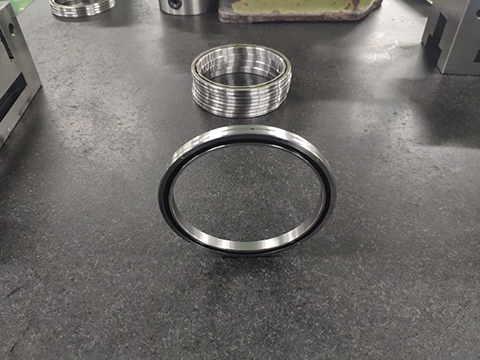Rotational accuracy of rolling bearings
The rotational accuracy of rolling bearings refers to:
1. The radial runout of the inner ring and outer ring of the complete set of bearings;
2. The end-to-face runout of the inner ring and outer ring of the complete set of bearings;
3. The runout of the reference end of the inner ring to the inner diameter;
4. The variation of the inclination of the outer surface busbar to the reference end surface;
5. The variation of the thickness of the raceway of the thrust bearing raceway to the bottom surface.
Symbols and definitions:
1. The radial runout of the bearing
Kia—the radial runout of the inner ring of a complete set of bearings, refers to the difference between the maximum and minimum distances between the inner diameter surface and a fixed point of the relative outer ring when the inner ring is at different angular positions;
Kea——The radial runout of the outer ring of a complete set of bearings refers to the difference between the maximum and minimum distances between the outer diameter surface and a fixed point of the inner ring when the outer ring is at different angular positions.
2. The beating of the bearing end to the raceway
Sia——The runout of the end face of the inner ring of a complete set of bearings refers to the reference end surface of the inner ring at a position where the radial distance from the axis of the inner ring is equal to half the contact diameter of the inner ring raceway when the inner ring is at different angular positions The difference between the maximum and minimum axial distances from a fixed point relative to the outer ring.
Sea——The runout of the end face of the outer ring of a complete set of bearings refers to the reference end surface of the outer ring at a position where the radial distance from the axis of the outer ring is equal to half the contact diameter of the outer ring raceway when the outer ring is at different angular positions The difference between the maximum and minimum axial distances from a fixed point relative to the inner ring.
3. The runout of the reference end face of the bearing inner ring to the inner diameter
Sd——The runout of the inner diameter of the reference end face of the inner ring refers to the distance between the plane perpendicular to the axis line of the ring and the reference end face of the ring at the radial distance from the axis of the inner ring equal to half of the contact diameter of the raceway The difference between the maximum and minimum axial distance of .
4. Variation of the inclination of the busbar on the outer surface of the bearing to the reference end surface
SD——The variation of the inclination of the bus bar on the outer surface to the reference end face, which refers to the limit length of the outer diameter surface (excluding the maximum axial chamfer size at both ends) in the radial plane parallel to the tangent plane of the reference end face of the outer ring , the total variation of the relative position of each point on the same generatrix.
5. The variation of the thickness of the shaft ring and the raceway of the seat ring to the bottom surface
Si——The variation of the thickness of the shaft ring raceway to the bottom surface, which refers to the difference between the maximum and minimum axial distances between the bottom surface of the shaft ring and the middle of the opposite raceway.
Se——The variation of the thickness of the seat ring raceway to the bottom surface, which refers to the difference between the maximum and minimum axial distances between the bottom surface of the seat ring and the middle of the opposite raceway.



